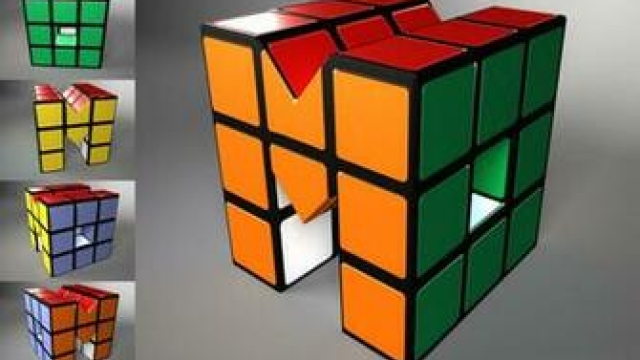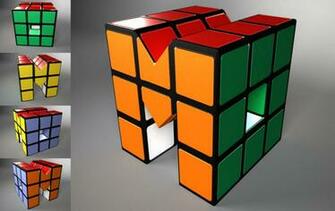
Mastering the Art of Speed Cubing: Unlocking the Secrets to Solving the Rubik’s Cube in Record Time
Are you ready to take your Rubik’s Cube solving skills to the next level? If you’ve already mastered the art of solving the classic puzzle, it’s time to delve into the world of speed cubing. Speed cubing is a competitive sport that challenges participants to solve the Rubik’s Cube as quickly as possible, often utilizing specialized speed cubes to achieve record-breaking times. In this article, we will explore the secrets and techniques behind speed cubing, uncovering the strategies that can unlock the ability to solve the Rubik’s Cube in record time. Get ready to embark on an exciting journey of speed, precision, and dexterity as we delve into the fascinating world of speed cubing.
Choosing the Right Speed Cube
When it comes to speed cubing, one of the most crucial decisions you’ll make is selecting the appropriate speed cube. A speed cube is designed specifically to enhance your solving experience and improve your overall speed. With numerous options available in the market today, it can be overwhelming to decide which one to invest in. However, by considering certain factors, you can make a well-informed choice.
First and foremost, pay attention to the cube’s mechanism. Many speed cubes feature advanced mechanisms that allow for smooth and seamless movements. Look for cubes with a high-quality core, such as the popular GAN or MoYu brands, as they often provide excellent turning capabilities. These mechanisms ensure minimal friction and resistance, allowing you to navigate the cube with utmost precision.
Next, consider the cube’s size. Speed cubes come in various sizes, typically ranging from 2×2 to 7×7. The most commonly used size for speed cubing is 3×3, as it strikes a balance between maneuverability and complexity. However, some speed cubers prefer smaller cubes, like the 2×2, for their portability and ease of manipulation. Experiment with different sizes to find what works best for you.
Lastly, take into account the cube’s overall stability. Look for cubes that offer adjustable tensions and elasticity settings. These features allow you to customize the cube’s tightness and flexibility according to your preferences. A stable cube will minimize lock-ups and pops during solves, ensuring a smoother solving experience overall.
In summary, when choosing the right speed cube, focus on the mechanism, size, and stability. By selecting a cube with an advanced mechanism, suitable size, and adjustable tensions, you’ll be on your way to mastering the art of speed cubing in record time.
Key Techniques for Speed Cubing
In the world of speed cubing, mastering the right techniques is crucial for solving the Rubik’s Cube in record time. Whether you are a beginner or aiming to become a competitive speed cuber, understanding these key techniques will greatly enhance your skills and improve your solving speed.
Cross Technique: The first step in any Rubik’s Cube solution is to solve the cross on one side of the cube. This technique involves strategically solving the four edge pieces in a way that forms a cross pattern. By focusing on efficiently solving the cross, you can lay a strong foundation for the rest of the solving process.
F2L (First Two Layers) Technique: Once the cross is solved, the next step is to solve the first two layers of the cube. This technique involves solving the four corner pieces and four edge pieces of the first two layers simultaneously. By combining efficient algorithms and intuitive thinking, speed cubers can quickly solve these layers while minimizing the number of moves required.
21 by 21 rubik’s cubeOLL (Orientation of the Last Layer) and PLL (Permutation of the Last Layer) Techniques: The final step in solving the Rubik’s Cube is to orient and permute the last layer pieces. OLL involves orienting all the pieces of the last layer while PLL focuses on permuting them into the correct positions. Speed cubers utilize a set of algorithms to efficiently execute these techniques, allowing them to rapidly solve the last layer and complete the Rubik’s Cube.
By mastering these key techniques, speed cubers can significantly improve their solving times and achieve impressive results. Remember, practice and dedication are essential in perfecting these techniques. So grab your speed cube, start solving, and unlock the secrets to speed cubing success!
Strategies for Achieving Record Times
In the pursuit of achieving record times in speed cubing, mastering certain strategies can greatly enhance your solving abilities. Here are three key approaches that can help you reach new heights in your speed cubing journey.
Develop an Efficient Cross: The first step in solving a Rubik’s Cube is to complete the cross on one face of the cube. To achieve fast times, it is crucial to develop efficient techniques for solving the cross. By planning ahead and utilizing intuitive or advanced methods, such as the Fridrich method, you can reduce the number of moves required to complete the cross. This will not only save time but also set a solid foundation for the remaining steps of the solving process.
Practicing Look-Ahead: Look-ahead refers to the ability to plan your next moves while executing the current set of moves. It is a skill that can significantly improve your speed cubing performance. By training your brain to anticipate the optimal moves before physically executing them, you can minimize pauses between moves and maintain a smooth solving flow. Consistent practice and solving puzzles of varying complexity can help enhance your look-ahead abilities.
Algorithm Optimization: Algorithms are predefined sets of moves that speed cubers use to solve specific scenarios on the Rubik’s Cube. One way to attain faster times is by optimizing these algorithms. Analyze and scrutinize each algorithm you use in your solving method. Look for alternative sequences of moves that could lead to quicker solves. By refining these algorithms and selecting efficient variations, you can save precious time during your solves and improve your overall speed cubing performance.

By employing these strategies, namely developing an efficient cross, practicing look-ahead, and optimizing algorithms, you can unlock the secrets to achieving record times in speed cubing. Remember, consistent practice and persistence are vital in honing your skills and reaching new milestones in the exciting world of speed cubing.

